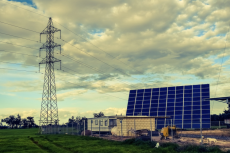Importance of Deep-Sea Oxygen Production
The groundbreaking discovery that oxygen is being produced at staggering depths beneath the ocean’s surface, revolutionises our understanding of deep-sea life and the origins of oxygen on Earth.
As already reported researchers have uncovered mysterious "nodules" on the ocean floor, about 13,000 feet down, that are capable of generating oxygen in complete darkness. The study focused on the Clarion-Clipperton Zone in the Pacific Ocean, where researchers initially thought their sensors were malfunctioning.
The nodules, which are rich in valuable metals like cobalt, nickel, copper, and lithium—essential for technologies such as lithium-ion batteries—were found to carry a high electric charge which allows them to act like natural "geo-batteries," that electrolyse water into oxygen and hydrogen. This process appears to be the source of the deep-sea oxygen detected.
The importance of the discovery
The reason why this finding is so important is that it is the only source of oxygen found so far other than photosynthesis. This process first began about 4.5 billion years ago. At that time, Earth had a very different atmosphere, primarily composed of gases like carbon dioxide, methane, ammonia, and water vapour. Oxygen was virtually absent. As the planet cooled, water vapour condensed to form oceans, and landmasses began to emerge.
Around 3.5 billion years ago, some of the earliest life forms, known as cyanobacteria (or blue-green algae), evolved the ability to perform photosynthesis. This process converts carbon dioxide and water into glucose and oxygen using sunlight. Initially, the oxygen produced by cyanobacteria was absorbed by dissolved iron and other elements in the oceans, forming insoluble iron oxides. Once these sinks were saturated, oxygen began to accumulate in the atmosphere.
This major increase in atmospheric oxygen occurred around 2.4 to 2.3 billion years ago. It marked the beginning of a significant rise in atmospheric oxygen levels and led to the formation of the ozone layer, which protects the surface from harmful ultraviolet radiation.
And the sky turned blue!
The increase in atmospheric oxygen allowed for the evolution of aerobic respiration, a more efficient way of generating energy compared to anaerobic processes. This paved the way for more complex life forms and led to a dramatic increase in the diversity and complexity of life.
Today, oxygen continues to be produced by plants, algae, and cyanobacteria through photosynthesis. This discovery that oxygen is also being produced by deep sea natural batteries is therefore an important one.
Implications
As researchers continue to explore this new phenomenon, the implications for both science and industry are profound. The deep-sea nodules may play a far more critical role in marine ecosystems than previously thought, and safeguarding these oxygen-producing geo-batteries could be crucial for the health of our oceans.





























